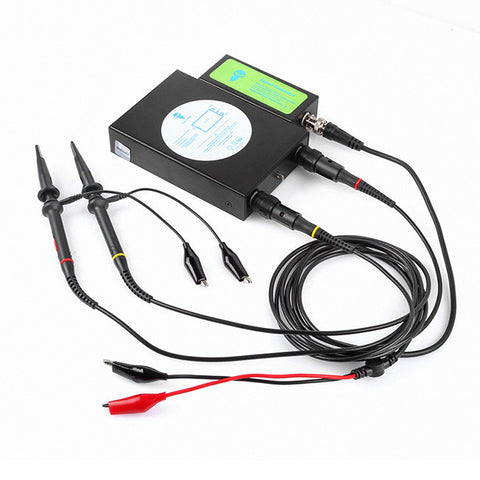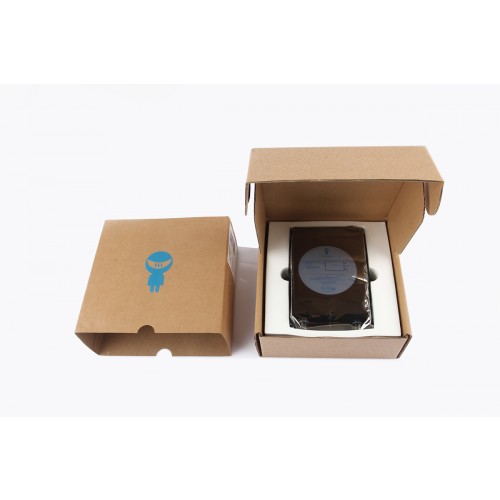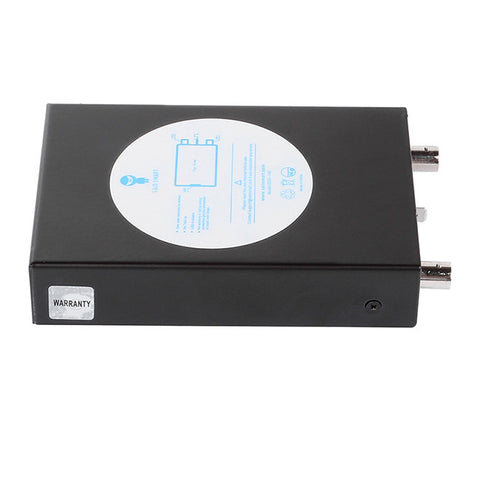

- #Sainsmart dds140 review install#
- #Sainsmart dds140 review generator#
- #Sainsmart dds140 review serial#
- #Sainsmart dds140 review drivers#
- #Sainsmart dds140 review software#
The included software also comes with an FFT analysis, waveform recorder, and a knob panel display for those that just can’t separate themselves from the traditional twist-and-push oscilloscope interface.
#Sainsmart dds140 review generator#
For the budget-conscious, the DDS140 is a relatively rugged device, which also includes the ability to extend its functions with optional signal generator and logic analyzer functions. The SainSmart DDS140 is a low-cost 2-channel, 200-MS/s, and 40-MHz bandwidth oscilloscope with a price tag of just over $100. Beyond its highly dense feature list, the Analog Discovery 2 comes with free software that makes many test setups extremely simple, with a learning curve good for education and industry alike. The feature extensibility is enabled by an included adapter with lead pins that can easily be connected to a breadboard or other accessories. This is certainly not a high-performance oscilloscope, but with a price tag of just under $300 and an integrated 2-channel 14-bit arbitrary waveform generator, logic analyzer, pattern generator, voltmeter, programmable power supply, network analyzer, spectrum analyzer, and other features, it’s a useful device to have for all experience levels and projects. The Analog Discovery 2 is really an instrumentation lab in a small plastic rectangle it contains a 2-channel 14-bit oscilloscope function with a sample rate of 100 MS/s, bandwidth beyond 30 MHz, a voltage range of ☒5 V, and a max buffer size of 8,192 samples. Image source: Digilent.ĭigilent’s new Analog Discovery 2 builds on the success of the first Discovery module and adds new features and greater performance at only a marginal increase in cost. The following is a brief introduction into a few choice USB oscilloscopes, some with surprising new features. This accessibility, along with performance and feature enhancements every year, make PC-based USB oscilloscopes an attractive buy across the board. Much of this has changed since the advent of PC-based USB oscilloscopes, as these devices are lower-cost, have less of a learning curve, and can readily be customized and programmed for a user’s particular needs. In previous years, it was difficult for a hobbyist to obtain a quality digital oscilloscope because of prohibitive costs, and even professionals are often limited in equipment access to designated engineering spaces. Good luck to you.By Jean-Jacques DeLisle, contributing writerįor novices, hobbyists, and even veterans, an oscilloscope is one of the most useful tools for designing, diagnosing, learning, and otherwise working with electronics. I feel that I very much got my moneys worth with this scope. This device would not replace a professional digital scope, but for the very inexpensive price and its small size, it would be an excellent first learning tool for novice to intermediate electronic and engineering students. The user interface is fairly intuitive and I became proficient in using the tool in a short period of time.


The raw data of displays can be exported as a text files. There is a Fast Fourier Transformation (FFT) graphing display available in real time to see the frequency distribution of the signals. There are some graphical interface measuring tools available. I can record as many frames of data as I want and play it back frame by frame. I can watch two channels of random digital signals in real time or I can freeze the signals and pan forward and backwards about ten fields worth of signals. The DDS 140 software now works very well on my computer. It turned out that my computer's display needed to be changed to a smaller font in the control panel.

At first, I did not understand how the controls worked and I did something that made the program freeze. The DDS 140 software loaded quickly with no errors.
#Sainsmart dds140 review drivers#
I ended up uninstalling all the computer's USB drivers and restarting my computer so I could freshly try the driver installation again.
#Sainsmart dds140 review serial#
The driver installed under "Universal Serial Bus devices" as "WinUsb device". Also, for my computer, the driver was not installed under the Device Manager's "Other Devices" heading as is stated in the installation directions.
#Sainsmart dds140 review install#
When I plugged in the device, Windows 7 kept wanting to install what it thought was the best driver. I had more trouble loading the driver software. I had trouble loading the 3 inch CD into the DVD player but eventually got it to read. I have a Dell T3400, 64 bit, Windows 7, workstation with a NVIDA Quadro NVS 290 graphics card. I'm pleasantly surprised with the abilities of this new tool. I thought I would take a chance with the DDS 140. My current analog scope was inadequate to investigate digital signals for a recent project.


 0 kommentar(er)
0 kommentar(er)
